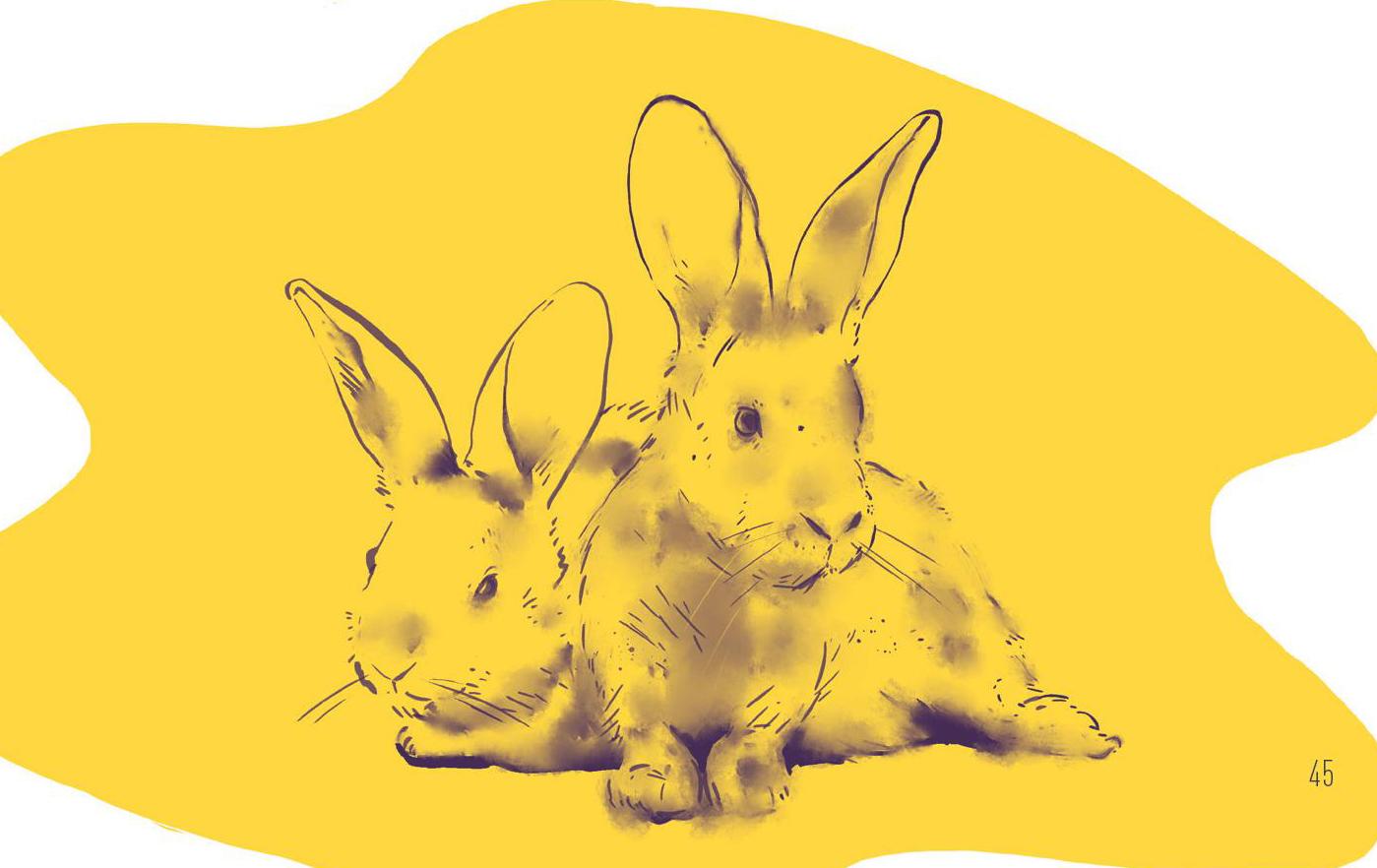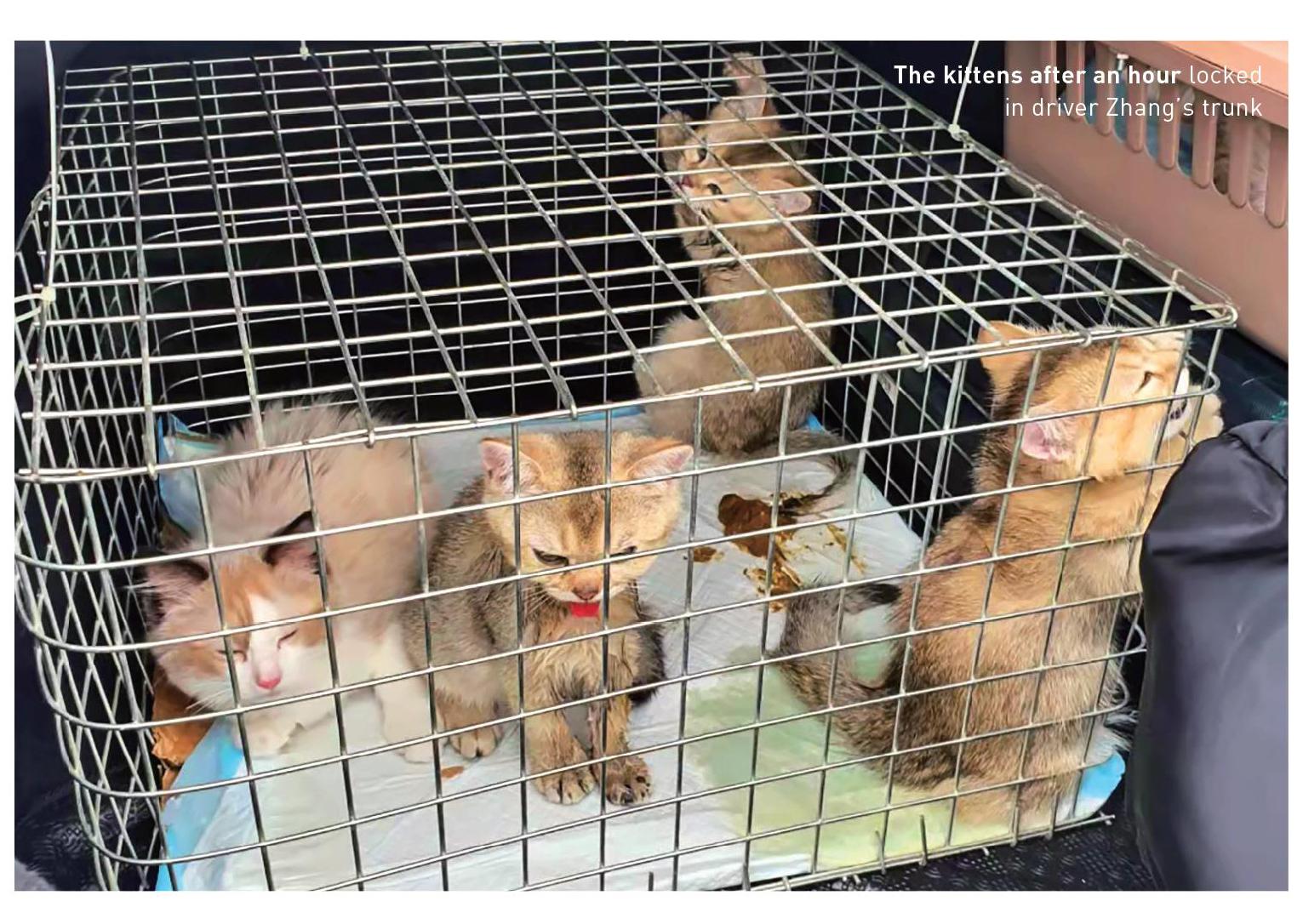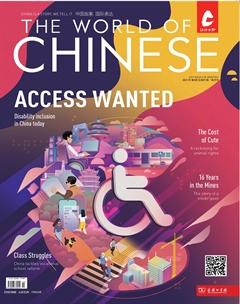The Cost of Cute
Alex Colville



Chinas pet industry is booming, but abuse is rampant at every stage of the sector
寵物经济兴起的背后,动物权益如何保障?
After an hour on the highway, driver Zhang Huanan (pseudonym) pulls his white sedan into a service station, opens the trunk, and drips bottled water onto four panting Persian kittens. Their fur is matted with sweat, and they claw at the bars of their wire cage in a pathetic bid for freedom. The tissues lining the floor do little to absorb the urine and feces.
Despite Zhangs encouraging chirruping sounds, the exhausted, oxygen-starved pets give little response. The trunk is slammed shut after five minutes, as Zhang is anxious to be on his way—theres another two hours to the kittens destination, a pet shop in an upscale shopping center in a so-called “fifth-tier” city with a population of 1.3 million in northeastern China.
Driving with animals in the trunk would run afoul of anti-animal cruelty legislation in several countries around the world. But without comprehensive animal protection laws, nor widespread education to encourage compassion toward animals among children or adults, there is little to deter individuals and companies in China from mistreating animals for profit, pleasure, or simply to cut costs.
As far back as 2009, legal experts drafted anti-animal cruelty legislation calling for animal welfare policies like guaranteed “living space” for animals in breeding sites, a ban on surgically altering an animal “for the purpose of viewing or taking pictures,” nationwide education on animal cruelty, and 5,000 RMB fines for acts of cruelty against pets.
However, this draft legislation never made it onto the agenda of the National Peoples Congress, Chinas highest lawmaking body. That means existing regulations on animals in China still treat them as just potentially harmful property: The Civil Code outlines the liabilities of an owner whose animal causes damage to others, while there is extensive regulation in preventing disease—in 2020, the NPC Standing Committee ordered a total ban on all hunting, rearing, and transportation of wild animals for food due to the suspected connection between the wildlife trade and the Covid-19 outbreak.
Garden variety forms of animal cruelty can thus be found everywhere in society, at least if the internet is any indication. Security footage regularly surfaces of delivery drivers, pet owners, or small children, picking up small puppies in public places and violently hurling them to the ground. In 2020, Fan Yuanqing, a student from Shandong province, was publicly condemned for selling videos of himself torturing and killing cats—an online fetish that has been rampant since at least the mid-2000s, when online vigilantes known as the “human flesh search engine” famously doxed the “Hangzhou Kitten Killer,” a woman who was filmed crushing a kitten with her high-heels.
All this, despite a surge in Chinese demand for all things fluffy. “Everything about the pet market is currently booming,” Dr. Yuan-Chih Lung, South East Asia representative for ACTAsia, an NGO dedicated to promoting awareness of animal welfare, tells TWOC.
In the second half of 2020, the percentage of Chinas pet owners in so-called “second-tier cities” nearly doubled from the previous years figures, from 24.9 percent to 43 percent, according to a report compiled by online pet industry database PetHadoop.
The report reckoned the nations pet market to be worth 206.5 billion RMB, claiming there are 62 million dog and cat owners across urban China, without counting rural areas and unregistered pets. The countrys pet economy—supplies, food, care, and pets themselves—has grown by 2,000 percent in the last decade, according to China Business Review.
Even urbanites without pets have plenty of avenues for getting their cuteness fix. Pet cafes, where customers can interact with doe-eyed, short-limbed cats and dogs while sampling coffee and desserts, are now staples of fashionable business districts all around China. Some, in major metropolises like Beijing and Shanghai, now feature expensive exotic animals like kangaroos, capybaras, and racoons to cater to a voracious appetite for novelty.
Driver Zhang is acting as an informal pet-courier, saying he “regularly” transports pets in the trunk of his car while delivering other goods for clients who opt not to use logistics companies, as well as human passengers like a normal taxi (including TWOCs reporters, who encountered Zhang and his kittens en route to a different story). Aside from a few cases of carsickness, Zhang claims, flicking on his turn signal, he has never had any animals taken seriously ill while in transit.
He rattles off the numbers: Persian cats are an expensive pedigree breed, so he bumped up the usual pet delivery fee—at 200 RMB each, meaning he makes around 1,000 RMB in total for a three-hour trip. He flatly refused TWOC reporters offer to carry the cage on their laps, citing the difficulty of securing the cage, the lack of space, and the risk of bad smells and stains making his next passenger give him a bad review on the ride-hailing app.
Lung alleges the notion of having emotional connection to an animal is still alien to a significant part of Chinas population, which until recently viewed animals as either a “resource” on farms or “pests” to be eliminated. During historical periods when food supplies were often uncertain, no additional resources or care could be wasted on creatures that did not create economic value for the household.
Top-down policies complemented this view: In 1957, when Canadian journalist William Kinmond asked why he hadnt seen any dogs during his trip to China, the Chinese Minister of Health reportedly explained thered been a nationwide cull of “pests” in 1952, lumping dogs with mosquitoes and rats. Dogs were banned from most Chinese cities for an entire decade between 1983 and 1993 to combat a serious rabies epidemic. Pet ownership only began to increase after the reform period, with China going from just one brand of dog food in 1993 to a 900 million RMB pet industry by 2014.
Cuteness became just another commodity for the fast-expanding open market, leaving the civic infrastructure that could have protected animal welfare struggling to catch up. “The rural experience [of using animals as resources]…was transformed into an urbanized experience of living with pets,” says Dr. Lung. For the majority of Chinas newly minted pet owners, their animal is “just a toy. If you dont like it, you can just throw it away,” states a volunteer at one of Beijings numerous privately-run animal shelters, who requested anonymity.
For the kittens in Zhangs transport, journeys end is a large pet shop in a glitzy shopping mall, with pictures of resident cats (called “little brothers” on signs) pinned on a board. Written around the edges of each photo are personality types for each feline, with sassy imagined statements—“Dont ask why Im sleeping, Im not an emotionless baby-raising machine”—that could strike a chord with family-avoiding young millennials, who now make up three-quarters of Chinas pet owners according to the 2020 report.
Transporting these little brothers in the trunks of private vehicles, Dr. Lung observes, risks the spread of disease, while the physical and psychological stress inflicted on animals so young “can lead to many other related physiological changes, such as dehydration, spasms, or even death.”
Others in the pet industry have tried to cut logistics costs and save time by sending animals through standard courier systems. In May animal rescue workers intercepted two trucks owned by parcel-delivery service ZTO Express, one in Chengdu in west-central China and one in Suzhou on the eastern seaboard, that transported around 180 small cats and dogs stacked in boxes in their airtight cargo hold, many of them already dead on rescue. They were products of live animal “mystery boxes,” a once-openly advertised fad on e-commerce platforms, where buyers can purchase an animal of unknown breed, not knowing what theyve been sent until an animal arrives.
Breeding all these animals is equally harrowing. “There are no good breeding facilities in China,” the volunteer alleges. “Im sure of it.” Another animal shelter sent TWOC numerous images of pets rescued from such breeding centers, riddled with skin diseases, and missing eyes or limbs. Since 2010, local officials have been required to conduct inspections on animal breeding farms for lighting, ventilation, and sewage discharge facilities, but these are oriented toward disease prevention rather than animal welfare (so cage sizes or methods of animal restraint and nourishment do not feature).
The volunteer also alleges that because cats and dogs are typically in heat only twice a year, breeders inject their animals with hormones, so they can breed more often and increase profits—then abandoning the animal, euthanizing them, or selling them off to the meat trade after their bodies wear out in three to four years.
In 2019, an investigation of “underground” breeding centers by state broadcaster CCTV found that many breeders neglect to give puppies and kittens the three vaccination shots against a plethora of diseases, required to ensure long-term health, including rabies, and obtain an immunization certificate, as they cost as much as the breeder would make from selling the animal in the first place.
In turn, pet shops that purchase these animals also neglect the shots due to marketability. “The animal can be vaccinated only after maybe two months at the earliest, but puppies are the most adorable when theyre one month old,” says the shelter volunteer. This leads to puppies or kittens bought from a pet shop promptly falling sick and dying a week after they are brought home by inexperienced pet-owners.
Efforts to enact and enforce an anti-animal cruelty law have been stymied by various political and cultural factors. An Xiang, director of Beijings Dexiang Law Firm, who participated in drafting the 2009 legislation, speculates a lack of grassroots agreement on how to treat animals led to the laws failure to pass. As examples, he cites regions in the south of China where dog meat consumption has been promoted as a cultural heritage, while Dr. Lung points out that lingering differences in rural and urban attitudes toward animals still hinder efforts to enact a nationwide law.
Activists and animal care workers also observe limited education among children and adults on compassion for animals, or even basic animal knowledge—such as the water, space, and emotional care that a living pet requires. This type of ignorance came to a head at the start of the Covid-19 pandemic in 2020, when several cities reported owners abandoning their cats, or even killing them by throwing them out of the window, due to rumors that animals could transmit the coronavirus.
On November 12 this year, a resident in Shangrao in the south-central Jiangxi province, who was quarantined due to a Covid-19 case in her compound, raised a public outcry when she posted a video online showing community workers forcing their way into her apartment and beating her pet corgi on the head with an iron bar, all in the name of disease-prevention.
Vigilante netizens have been active in identifying and punishing pet abuse, bringing some cases to local police in roundabout ways via other misdemeanors. The whistleblower who exposed Fan told journalists she had reported his cat-torture videos to the cyber police as well as his university, both of which took no action. Eventually, bowing to public pressure, the university asked Fan to drop out, but the whistleblower was doxed and harassed by animal-torture fetish groups.
Lung thinks it will require a “major event”—like biosafety regulations drafted in the wake of Covid-19—to drive legislation through. Until then, Lung argues, enforcement of animal protection will remain only “on the moral level.”
Lawyer An estimates another five to ten years of changing “ideology” at the grassroots level are required before lawmakers can take another stab at national legislation, and recommends adding clauses to pre-existing regulations rather than pushing through a new law, “for example, in the Public Security Law, we could add penalties for certain acts of cruelty to animals.”
Covid-19 has already enabled some small changes: On March 4, 2020, in accordance with more stringent policies on livestock farming in the wake of speculation on the origins of Covid-19, the Ministry of Agriculture took dogs off its list of designated “livestock,” thereby outlawing the breeding and selling of dogs for meat (but not eating them). The cities of Zhuhai and Shenzhen (both in Guangdong province, a center of the dog and cat meat trade) both became pilot zones, forbidding the consumption of animals used in “pet breeding.”
Some grassroots attitudes are changing. The 2020 PetHadoop survey claims 85 percent of pet owners now claim to view their pets as part of their family, either as their “children” or “relatives.” The survey also notes a correlation between a rise in education levels in pet owners and an increasing willingness among them to learn about pet welfare and health issues.
Lungs organization gives classes in animal welfare that is part of the official curriculum of over 100 primary schools, and says there may be more such courses around China without her knowledge. According to Lung, rather than focusing only on animal protection and mistreatment, her organization teaches empathy and respect for the natural environment.
“Abusing or being ignorant about animals is linked to the tendency in many people, and especially children, to disregard other peoples feelings, and disregard the world and the environment,” she says. “We put stress on [teaching] compassion—compassion for their classmates, for the natural environment, and for the animals that are an important part of the natural environment.” She also believes that increased pet ownership, as well as the growth of veterinary science and animal clinics, will increase peoples knowledge about animal behavior and health, which will lead them to place more value on animal lives.
Ultimately, activists and educators like Lung hope that people can see themselves as being connected to animals and nature. “I think more and more people are coming to realize that animal protection is a value that they already identify with, that is connected to existing values like kindness, justice, and environmental protection,” she says, citing the example of Covid-19s role in helping people make the connection between animal welfare and public health. “They are coming to realize that animal protection protects not just the animals themselves, but the whole of society.”
– Additional reporting by anita he (賀文文)
The kittens after an hour locked in driver Zhangs trunk
This dog, rescued from a meat truck, has a chronic skin disease due to the conditions he was kept in
A raccoon cafe in Shanghai charges customers 140 RMB to feed their residents
Cat cafes usually feature purebred or popular breeds of felines
A baby kangaroo in a Beijing pet cafe attracts customers craving novelty
The most well-equipped cat cafes can usually be found in malls and upscale business districts
Illustration by Xi Dahe
Photographs by Alex Colville and Nicoco Chan
 汉语世界(The World of Chinese)2021年6期
汉语世界(The World of Chinese)2021年6期
- 汉语世界(The World of Chinese)的其它文章
- Balcony
- Gimme Sugar
- Access Wanted
- Class Struggles
- 学汉语
- 16 Years in the Mines
